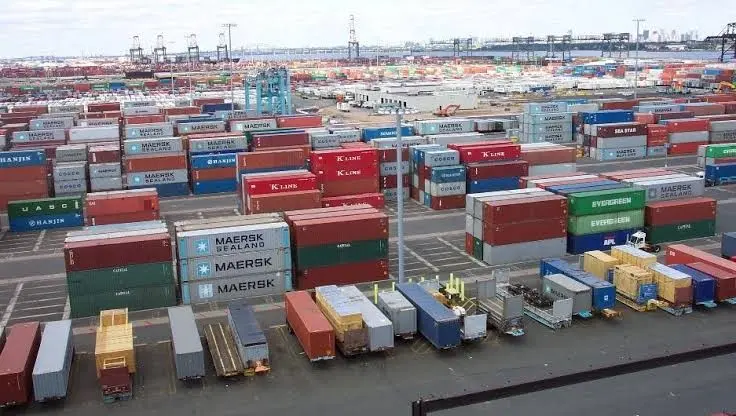By Milcah Tanimu
The Federal Government (FG) has announced plans to transition from physical inspection to 100% scanning of cargo at Nigerian ports, aiming to enhance operational efficiency and meet a N10 trillion projection for the sector. This initiative will involve procuring four additional scanners to complement the existing infrastructure, which currently stands at only 25% scanning capacity.
Olufemi Oloruntola, the Permanent Secretary of the Federal Ministry of Transportation, Marine, and Blue Economy, made this announcement during a meeting with the Chief Executive Officer of APM Terminals in Abuja. He emphasized the government’s commitment to optimizing port operations to achieve ambitious economic targets.
APM Terminals, a major player in Nigeria’s port industry, expressed its readiness to invest in enhancing port infrastructure. The company has already invested significantly in terminals at Onne Ports and plans to replicate its success at Apapa, Lagos Ports. Additionally, APM Terminals operates the Inland Dry Port in Kano, contributing to the development of Nigeria’s logistics sector.
Frederik Klinke, CEO of APM Terminals Nigeria, stressed the importance of modernizing port logistics and supply chains to support economic growth. He highlighted the urgent need for increased scanning capacity and advocated for rail connections to be integrated into terminal operations, particularly at Onne Port.
Moreover, Klinke urged the government to consider APMT’s interests in the development of Badagry Port as a long-term investment opportunity. APMT has initiated discussions with the Badagry Port Development Company and views the proposed Badagry Port as a complement to existing port infrastructure in Lagos.
The collaboration between the FG and APM Terminals underscores a shared commitment to advancing Nigeria’s maritime sector. By prioritizing technological advancements and infrastructure upgrades, both entities aim to unlock the sector’s full potential and contribute to sustainable economic development.

Leave a Reply